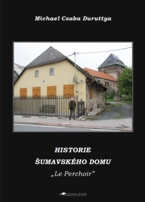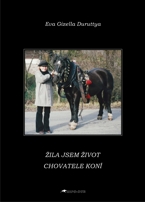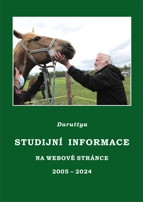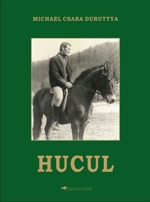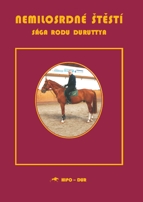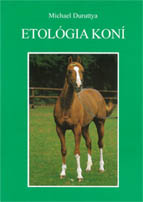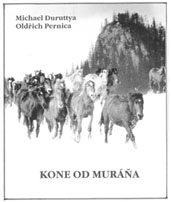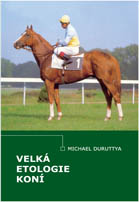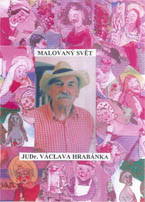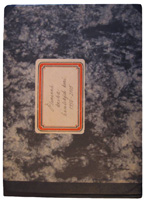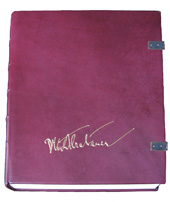REGARDING THE BREEDING NATURE OF RUSSIAN THOROUGHBREDSTo the issue of verifying the authenticity of Thoroughbreds originated in the U.S.S.R./Russia, or more precisely horses which the Russian breeder presented under this name in the past, any study did not pay attention to these days. In this respect, this study is definitely the first which undergoes an analysis by means of the scientific method. And this, despite the fact that in the middle of the past century, the British and North American Jockey Club repeatedly expressed their doubts in relation to breed affiliation to the original English thoroughbred for racehorses reared in Russia and running in the West at this time. It means that for the first time an opinion is heard indicating more than just a doubt on their declared identity. The aim of this study is to explain and justify step by step our claim. We will establish beyond doubt, taking into account the Thoroughbred originated in the U.S.S.R./Russia, resp. the Thoroughbred which Stud-Book was closed in the British Isles in 1791, that we are dealing with two different horse breeds. Introduction The history of Thoroughbred breeding on tsarist Russia territory is described sufficiently in the technical literature. A primary incentive for breeding the above-mentioned breed was from the sports and social point of view of this business as well as the endeavors of local aristocracy to imitate the British lifestyle. But the political ideology of post-revolutionary Russia substantively influenced the field of horse breeding as well. In Thoroughbred breeding reasoned a seemingly more gentle constitution of inbreeding effect which shows in this population continuously over 300 years. We refer to the fact that inbreeding started in the cradle of this breed among 40 families of mares. More properly and with respect to zootechnical terminology we might say “free, distant inbreeding from outside the Thoroughbred population.” The following idea originated in Soviet breeding principles of that time: “Thoroughbred breeding is not to be carried out in a blinkered manner but by means of creating individual and independent Thoroughbred breeding established on firm grounds because the quality of Thoroughbreds in capitalistic states is losing its value. The current early maturity of Thoroughbreds is of questionable value. The U.S.S.R. prefers long distances and race career at a higher age.” And so in the U.S.S.R., they rejected definitively a prolonged breeding procedure outside the Thoroughbred population, as this is a principle of breeding in all states breeding Thoroughbreds, without exception, with the aim of continual improvement of their efficiency. A quotation: “ …less resistant to an extreme climate which is habitual in the steppes of the Central Asia.” The goal of Soviet breeders was thus to achieve a more resistant and persistent population with a more steady constitution able to accommodate a harsh climate and rearing conditions at the location of their rearing and following use. The way to achieve this type of population finally became the method of so-called utility, conversion – breed thus forming crossbreeding. This breeding plan started in the twenties of the past century via the selection of 657 breeding mares corresponding with a prerequisite for producing offspring as similar as possible to the original English thoroughbred of which 359 mares were crossbreeds of the Russian Don Horse with Thoroughbreds, 261 mares were a product of three-breed crossbreeding of the Don Horse with the Black Sea Horse and 37 mares originated from crossbreeding on the basis of the Black Sea Horse with the Thoroughbred. These mares were repeatedly covered with Thoroughbred stallions imported from foreign breedings, particularly from England, France, Ireland, etc. It gave rise to several tens of parental lines representing horse populations bred on a certain studhorse. These lines were kept for five to six generations. Breeding mares imported into Czechoslovakia in the sixties to seventies, possibly into other states of the so-called Eastern bloc represented lines A, E, F, G, L, R, S, T and Z. The identification of Soviet stud farms from where originated the breeding material imported into Czechoslovakia, possibly into the Central Europe, shown that there have been involved breedings located in steppe areas of the North Caucasus, bounded on the east by the Don River lower reach, the Volga River and the Sea of Azov and on the south by the Ural Mountains and the Caspian Sea. After the disintegration of the U.S.S.R., these breedings are located in emerging, so-called succession states, namely Ukraine, Georgia, Moldavia, Kazakhstan, Kirghizstan, Azerbaidzhan, and naturally Russia. It is related to the traditional breeding area of the Don breed. The breed has been developed from a longtime crossbreeding of various local breeds, of which dominated Persian, Karabakh and Arabian breeds. This mixture has been from 1820 already repeatedly improved by the Thoroughbred with the aim to correct an exterior and increase speed. For the second time the Thoroughbred get into the population of the Don Horses around 1900, and this in such measure that it gave impulse to name the result of a pertinent crossbreeding “English-Don half-blooded horse”. Its dominant coat colour was solely chestnut. The mentioned horse population produced in following period a breeding basis for the Budyonny breed. The breeding aim was to create a new, modern breed. A fundamental mare material became the Don Horse covered solely by Thoroughbred stallions. A characteristic coat colour of the Budyonny breed was again chestnut, in a small measure bay and very rarely black. A final product of the described crossbreeding with its body frame as well as average physical parameters was similar, i.e. had traits of the Thoroughbred breed. Nevertheless, he did not reach its early maturity and speed within the following decades either. In the case of successful horses on racetracks, it had not an ability to pass its performance potential on its offspring. And it lost a characteristic brown coat colour of Thoroughbreds. Material and Methods Source materials to the presented study documenting basic reproducing characteristics and life span in examined horse populations has been provided by the Stud Book of the Czechoslovak Thoroughbreds from the period from 1960 to 1990 ( Volumes No. VII to XIII). A material for evaluating primary coat colours of Thoroughbreds has been collected from the Stud Book of the Czechoslovak Thoroughbreds as well as from official auction catalogues of yearlings in France, Germany, Great Britain, Ireland, Poland, Italy and Hungary in 2008 to 2012. The data have been processed by means of the mathematic-statistical methods. The evaluation of statistical significance of the resulting values has been carried out through the medium of the Student´s t-test and F-test on the selectesignificance level alpha = 0.05%. The significance test of the mean value differences has been executed by two-tailed t-test. For checking empirical opinions concerning the stability of reproducing characteristics as constant breeding signs has been carried out via testing the statistical significance through the quantity X2 (chi-square) for the equality of the mean values, according to the formula: The key concept for solving a risen problem became the phenomenon called the breeding characteristic (in German Rasseneigentümlichkeit). Every animal breed possesses it, the Thoroughbred just as well as a last Togo Pony vegetating in some of spots of the Saharan desert… Breeding peculiarity or particularity manifests itself in constant signs, because characteristics and signs of any breed, in a given case of horses, have been formed by phylogenesis and long-term breeding. It is related particularly to such markers as a question of reproductive period, specifically gravidity, fertility, natality, season rhythmicity of foaling or twin occurrence frequency, etc. The issue of primary coat colour just as average life span, resp. complex of the ethologic signs is also a non-omissionable part of already mentioned breeding characteristics of these animals. Results 1. Regarding the Thoroughbred coat colour from the point of view of the country of their origin A transparent breeding sign of horses/Thoroughbreds which is absolutely obvious at first sight is their primary coat colour. An immediate impulse for solving this problem was the scientific work of Y. Watanabe from 1980, published under name “Possibility of parentage test by coat colour in horses”, which the author solved in the Thoroughbred population of Japan provenance. Our primary interest related to verifying the authenticity of imported Thoroughbreds originated in the U.S.S.R./Russia has been stimulated in this respect particularly by an obvious atypical composition of single coat colours of horses in this domain. So the first step was verifying the empirical evidence, confirmed through a number of studies published by hippologists of repute in the last hundred years, according to them dominates in Thoroughbreds brown coat colour, possibly dark brown with a portion of 75 to 80%. The second most frequented coat colour variety of a given breed is chestnut of various shades with a portion of 15 to 20%. The occurrence of black horses and white horses is rather sporadic; it does not exceed a level of 2 to 5%. We compared presented opinions with findings obtained in a current Thoroughbred population, on relatively large samples of horses (n=3877). Their nature constituted of yearlings presented in 2008 to 2011 before auctioneers in Germany, Italy, France, Great Britain, Ireland and Hungary. Our attention was concentrated on a coat colour of breeding horses (stallions and mares) in Poland, Hungary, France and Czechoslovakia (n=1178). The fact that in the Thoroughbred population brown horses have really a dominant position (EU: 70.6%, CR: 79.9%) has been confirmed. Chestnut horses constitute 19.7% (EU), resp. 18.1% (CR). The portion of white horses is in the European Union´s countries as well as in Czechoslovakia low: 5.8%, resp. 1.1% just as black horses: 3.9%, resp. 1.1%. A diametrically different image offers the view of the analogical assessment of coat colour portions in the Thoroughbred population of the former U.S.S.R. In the seventies of the past century was in the most considerable Soviet stud farm “Voschod” (n=612) the portion of brown horses 60.9%, chestnuts 37.3%, white horses 1.0% and black horses 0.8%. A similar coat colour distribution was established as well as in the case of breeding mares imported from the U.S.S.R. into the Czechoslovak Thoroughbred breeding in the last third of the past century (n=129), whereas the portion of brown horses constituted 52.5%, chestnuts 42.6% , black horses 2.0% and white horses 2.9%. The analysis of coat colour distribution in the Czechoslovak Thoroughbred population, namely horses in which origin is present a hereditary factor after Russian horses to the second bloodline of ancestors (n=242), confirmed the shown trend of heterogeneous, inappropriate breed influence by the portion of 64.0% of brown horses, 33.5% of chestnuts and 2.5% of black horses, whereas the white horse occurrence was not observed at all. In this stage of our findings is already legitimate to pose the question of a cardinal importance: what brought into the Russian population of Thoroughbreds established, almost a twice higher portion of inappropriate and anyway atypical chestnut coat colour in comparison with the values detected in “the rest of world”? For explaining it is necessary to mention the basic patterns related to the coat colour inheritance. Because a basic gene for chestnut colour in horses is in any case recessive to brown as well as to all other colours, but it means, too, that a majority of parents, of which origin chestnuts imported from the U.S.S.R./Russia into Czechoslovakia, resp. to the Central Europe, dispose a hereditary base for the chestnut coat colour. That is why each chestnut is always purebred for this coat colour and cannot pass on its offspring other gene than that for above-mentioned chestnut coat colour. Presented facts already allowed to express valid doubts concerning the classification of imports from the U.S.S.R./ Russia to Thoroughbreds. Following identification of breeds, which played an essential role in forming a Russian type racehorse, confirmed our hypothesis. The Don horse as well as the Budyonny horse is characterized by the dominance of chestnut coat colour. 2. Regarding the distinctness in ethology of Thoroughbreds and U.S.S.R. / Russian imports One of decisive breed features, respectively characteristics of Thoroughbreds is a sensitivity intensity of their central nervous system (CNS). Our research of the life activity in Thoroughbreds proved the fact according to representatives of the said breed respond to the slightest disturbing, possibly unusual pulses or situations taking place in their immediate or distant environment. As a transparent, model situation appears before starting phase of races, namely horses´ stay in paddock, ceremonial defile and first moments after a sharp start. The aboe-mentioned period usually means for Thoroughbreds an enormous emotional stress. In addition to the expected maximum physical strain there play its important role unusually noisy environment, a number of unknown people, smells, lights, etc. The before starting “fever” accompanies a various measure of sweating. Therefore it is obvious that the display of a certain excitement within the period before starting is in the case of Thoroughbreds a natural phenomenon. But our direct experience obtained via observing horses from the U.S.S.R./Russia has not shown these phenomena: Russian horses always literally dragged in paddock, did not interested in the action around them. Their motion during the presentation was calm to slow, heads them hung, they did not sweat, and they were lethargic almost apathetic until the starting moment and seemed to be absent-minded… The race successes of horses originated in the U.S.S.R./Russia in the most difficult steeplechase on the European Continent (the Velka Pardubicka steeplechase) we put down to their non-thoroughbred origin. But so far, from passed 123 years of this race only four horses became winners three times, one even four times – each of Russian origin. Their common sign was, without any doubt, a low sensitivity threshold of their CNS to extremely demanding hurdles of this race, country of origin, absence of runner´s class and presence of the analogical chestnut coat colour. A good example of different behaviour of Russian origin horses can be also the finding achieved in the breeding practice – a mutual relationship of mares-mothers and their foals, in particular. Only and solely breeding mares originating in the U.S.S.R./Russia have been willing to adopt without any problems in addition to their own offspring as well another – foreign foals interesting in sucking their breast milk. Such eventuality is virtually impossible, or hardly feasible, in the case of Thoroughbred mares. 3. Regarding the differences in the Thoroughbred reproduction control and entries into the Stud Book The International Thoroughbred Breeders Association orders strictly and exclusively the application of natural method of the reproduction, i.e. covering from hand. From the beginning it was for reasons of elimination a possible questioning the identity of breeding stallion, e.g. by substitution. Currently, there is this practise as well as for commercial reasons. A violation of the above-mentioned order/principle is penalized by the supranational organization in non-recognizing such individuals born from the insemination as Thoroughbreds. In the U.S.S.R./Russian breeding this principle was broken since the beginning of the breeding procedure. It is confirmed concisely by a start list of Russian horses racing on the International meeting of so-called Eastern bloc countries taking place in Prague in 1981. Dr. Apahideanu – Romanian representative made a protest against start of a three-year-old stallion GAZOLIT, by ANILIN(sire), out of GANA(dam). He reasoned it by the fact that he could not originate other way than by the medium of insemination through a frozen semen of its longtime dead father. According to the editress of the Czechoslovak Stud Book of the Thoroughbreds: “…unsuspected traps are in documents on origin of horses imported from the U.S.S.R./Russia. The end of the Thoroughbred breeding is dated to 1949 including the registration on the U.S.S.R. Ministry of Agriculture. The Stud Book is of 1951. The condition of horse recognition/registration into the Stud Book is the mother origin only to the sixth generation of ancestors. The covering season takes practically all the year round.“ 4. Regarding the reproducing characteristics related to the county of origin In general terms, the most pronounced and also constant breeding signs and features are stated in relation to the reproducing characteristics complex. It means that within the certain, particular horse breed the values of reproducing characteristics are distinguished by the lowest measure of its variability. It results from their undisputed importance for preserving the continuity of any horse population existence. Therefore it has in the hierarchy of breeding signs and features the most significant position. 4.1. Regarding the fertility and natality A substantial question of our study is the evaluation of fertility (fruitfulness) and natality (birth-rate), i.e. a number of born foals. The results are differentiated from the point of view of the country of origin (CS, resp. Russia). A group of Czechoslovak mares possessing Russian genetic portion (CR x Russian) has been evaluated independently. We state that the mean value of the Czechoslovak breeding mares fertility is 5.36. In the case of Czech-Russian mares an examined point does the significant value 5.06 on the selected significance level alfa = 0.05%. In the case of original Russian breeding mares has this examined point a highly significant value of 6.87 (alfa = 0.01%). These results are confirmed as well by the course of histograms for the examined sign development: in the case of the Czechoslovak Thoroughbred mares there is displayed asymmetrical, sinistral distribution, i.e. lognormal distribution of the values. It is corresponding to the Thoroughbred mares reproducing characteristics, where occurs after sixth foaling a distinctive decrease in fertility, even if it occurs after 20 years of their life. Whereas the histogram of the analogical research subject in the case of original Russian mares displays almost symmetrical picture of the pregnancy development. From the point of view of the declared breed affiliation of these mares to Thoroughbreds, there is a diametrically different picture, entirely in accordance with our doubt related to their Thoroughbred origin. As well as in the case of natality (a number of born foals) of Thoroughbred mares of the Czechoslovak breeding, resp. Czechoslovak mares with Russian hereditary portion, we evaluate histogram courses as the asymmetrical distribution displaying non-standard distribution. A polar opposite is the examined sign development in the herd of Russian breeding mares which is exactly like already observed course of their pregnancy. It is obvious that the development of reproduction curve of Russian breeding mares occurs later and takes longer, whereas the frequency of foal births is shifted to a higher biological age. The result of statistical values examination can be considered to be significant if the computed F-value is higher than a table value for corresponding degree of freedom and selected significance level alfa = 0.05%. In a given case for verifying the prerequisite that groups of breeding mares differentiated by a country of origin represent different breeds. This our hypothesis has been confirmed both in the case of fertility, where value F= 3.285 a p-value = 0.03771, and natality, i.e. a number of born foals, where F=3.228 and the achieved significance level p-value = 0.0399. 4.2. Regarding the twins occurrence The results were processed via the Tukey-Kramer test of the multiple comparison that on the selected significance level (alfa = 0.05%) evaluated differences of selection averages with the critical value for a given sign. By means of introduced method, the implemented mathematic-statistical assessment of possible correlations, i.e. factors conditioning twins birth, shows following remarkable results. The result of examination of mares performance influence (on the basis of Gh value in three years) on multiple foeta births occurrence is the finding of value significance, and that in the case of Czech- Russian mares, i.e. daughters of imported Russian mares covered by domestic stallions of the performance range from 23 to 51.8 kg Gh, whereas F-test value for the selected significance level alfa = 0.05% is 0.0395. The influence of mare-mother age on the twins birth occurrence was proven in the case of the Czechoslovak breeding animals. It was as well in the case of third foaling twelve-year mares (y=0.03402), resp. fourth foaling thirteen-year broodmares (y=0.03958). On the basis of F-test value there can be established the significance of age influence on twins occurrence in the case of the twelve-year Czech-Russian mares in third birth (y=0.04039), resp. fifth birth of thirteen-year imported, original Russian mares (y=0.0374). The examination of the influence of birth order on twins birth possibility established the significance existence for this examined relationship. And that is exclusively in the case of imported Russian mares, both 4-year-old in the first birth (y=0.0125) and 6-year-old in third birth (y=0.0252). The latest examined point of view which had been verified via the Tukey-Kramer test was the evaluation of the influence of basic coat colour of mares-mothers on twins birth occurrence. In this connection there was found a relevant relationship existing in the herd of Czechoslovak Thoroughbred population, respectively in the case of mares of brown coat colour (y=0.0264). An obvious relationship is ascertained also in Czech-Russian mares of black coat colour (y=0.0380). There cannot be left without comment the finding according to which does exist the significant correlation of the Russian genetic element influence as the significant risk factor in case of the summary score of born Thoroughbred foals on the twins occurrence: of six significance evaluations on the basis of F-test this is related just to 84% of imported mares from the U.S.S.R./Russia territory, resp. their daughters born in Czechoslovakia and only one case of the breeding mare of Czechoslovak provenance, i.e. classic Central European origin. 5. The question of the breeding mares’ life span in relation to the country of origin The result of verification the hypothesis of mean value consistency for life span among particular groups of breeding mares differentiated by the country of origin carried out by the method of two-tailed F-test on the selected significance level alfa = 0.05% has been rejected. It means that examined relationship of the survival factor (practically life span) to the country of mares origin is objective and that in every possible comparisons: CS versus CS x Russian (F = 0.0558), CS versus Russian (F = 0.0005) and CS x Russian versus Russian (F = 0.0176). Examining as well as the relationship of pregnancy number and survival age factor of breeding mares differentiated by the country of origin, the dependence is in all cases represented concisely by a broken linear function. From a certain life span the mean time between pregnancies is shorter. Among sets are two significant/basic differences: a) CS set shows a much smaller variance (0.62) in comparison with both of the following sets: CS x Russian (1.59), resp. Russian (1.55). This finding is characteristic for products originated from the crossbreeding various disparate breeds. In a given case of various Russian rustic breeds with the Thoroughbred; b) A higher frequency of pregnancy in CS set is related to the higher age of these mares survival (13 years) than in next two groups with a different portion of the Russian gene element: CS x Russian (10) and Russian (10). 6. The use of Russian horses in world and the Czechoslovak Thoroughbred breeding The actual essence of Russian Thoroughbreds (in fact English thoroughbreds) and their failure to establish themselves in the real Thoroughbred breeding as an improver we are illustrating at several examples published in the world press. In 1957 born ZABĚG (by BALTIK BARON, sire, out of ZERKALNAJA, dam) reared in the U.S.S.R. stood in 1959 on the start of the most prestigious horse race of world – the Washington, D.C. International in Laurel Park. He came in the third place with the distance 14 lengths. It was historically a first start of Russian horse on the racetrack in the U.S.A. In the Jockey Club spokesman´s statement of the day of 17th November 1962 is written: “We have strong doubts about ZABĚG action in breeding. According to rules studhorses must be registered in the Stud Book of the Thoroughbreds, but ZABĚG does not!” In spite of this, after granting the exception, this stallion acted in the U.S.A., in Mrs. Tippett breeding. His breeding use ended with an absolute failure. The stallion became a truly shame for the U.S.S.R. in the area of Thoroughbred breeding. Analogically a number of the Czechoslovak derby winners originated in the U.S.S.R./Russia territory and their following breeding use can be characterized just with words – waste, disappointment and a fast leaving out of sight. Their failure in Thoroughbred breeding may be ascribed to the fact, that they are universally utility crossbreeds, i.e. products of the hybridization process. But absolutely they were not representatives of stabilized, bred population, such as the Thoroughbred. Conclusion On the basis of analysis of basic reproduction, performance and ethological characteristics, possibly morphological traits of breeding mares originated in the U.S.S.R. /Russia and their confrontation with the similar research implemented in the Thoroughbred mares population of the Czechoslovak breeding/origin we express our final postulate: The Thoroughbred of the Czechoslovak breeding and horses declared by the Russian breeder Thoroughbreds are two entirely different horse breeds. Thereby was answered the objective mentioned in the head of this study aimed at examining the breed affiliation of imported horses from the U.S.S.R./Russia into Czechoslovakia and other East European countries in 1960 to 1990 declared Thoroughbreds. M. DuruttyaImpressumDipl.-Ing. Michael Duruttya, Ph.D. (70) Hippologist, ethologist, authorized expert, publicist, author of 6 monographs, 37 scientific works and 382 papers. From 1972 he managed the most important stud farms in the former Czechoslovakia: Muráň (550 horses of following breeds: the Noriker, the Slovakian Mountain Horse and the Hucul), Šamorín (175 of the Thoroughbreds), Hrabušice (150 of the Bohemian-Moravian Belgian Horses and the Norikers) and the Hucul breed reserve in the Košice ZOO (50 horses). In 1990 he co-operated with Dr. Jens, Freiherr von Lepel in Thoroughbred breeding at the West Germany stud farm Erlenhof/Erlengrund. In Šamorín he reared two tens of horses of classic, group or international races and the Czechoslovak “Horse of the Century” – ŽELEZNÍK, the only one fourfold winner of the Velka Pardubicka steeplechase during its 123 years history. He participated in rearing a phenomenal mare ARVA, the winner of the classical Czech “Triple Crown”. In 2005 he was inducted into the Horse Breeding Hall of Fame in the Czech Republic. Currently, he is a special adviser to the National Stud Farm at Kladruby nad Labem. From the eighties of the past century, the author of the study was occupied with verifying the authenticity of Thoroughbreds originated in the U.S.S.R./Russia and imported into Europe/Czechoslovakia in the sixties to the nineties. It means he worked on this subject almost 30 years. |

 Dipl. Ing. Michael Duruttya, CSc., Ph.D.
Dipl. Ing. Michael Duruttya, CSc., Ph.D.


